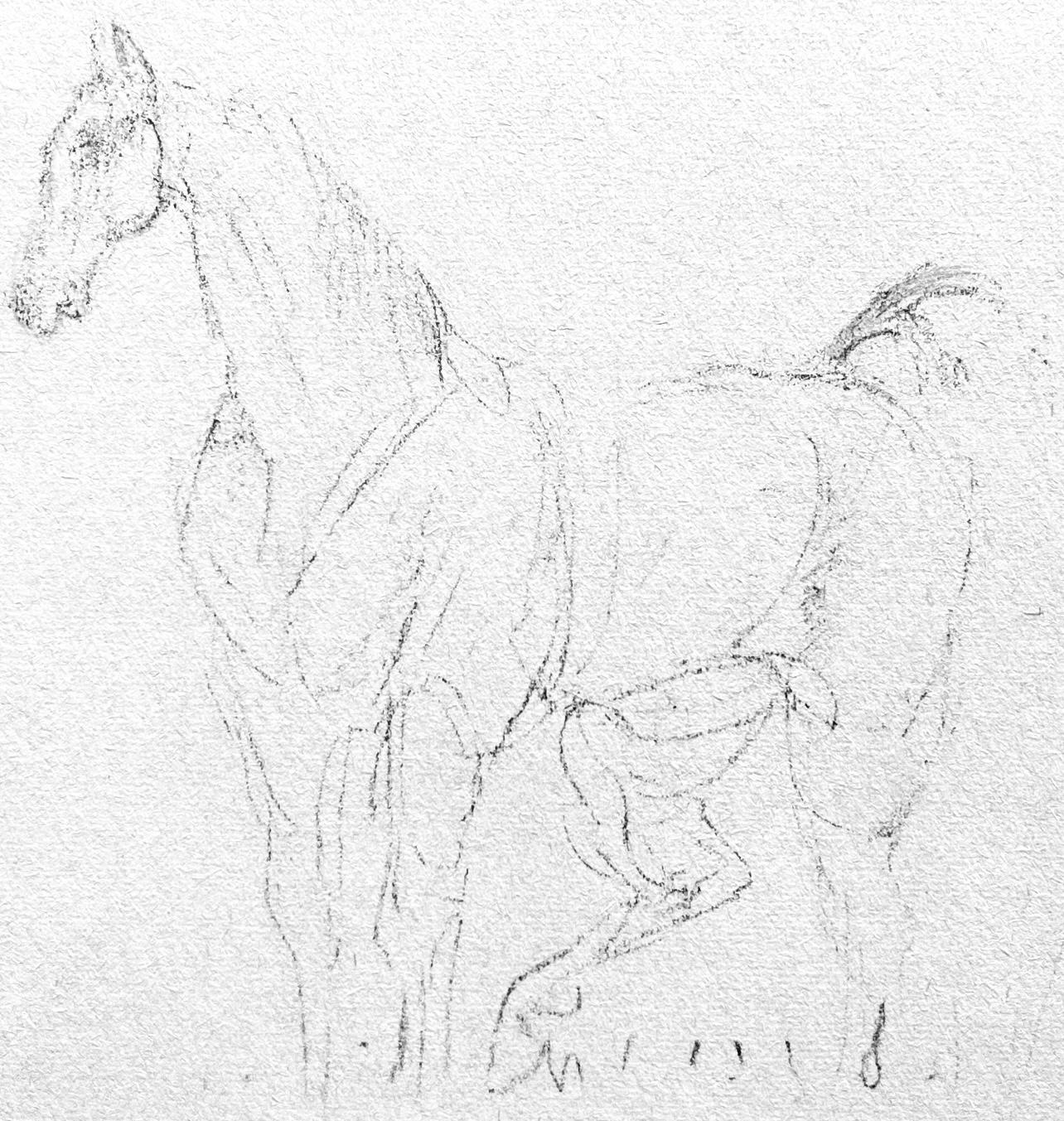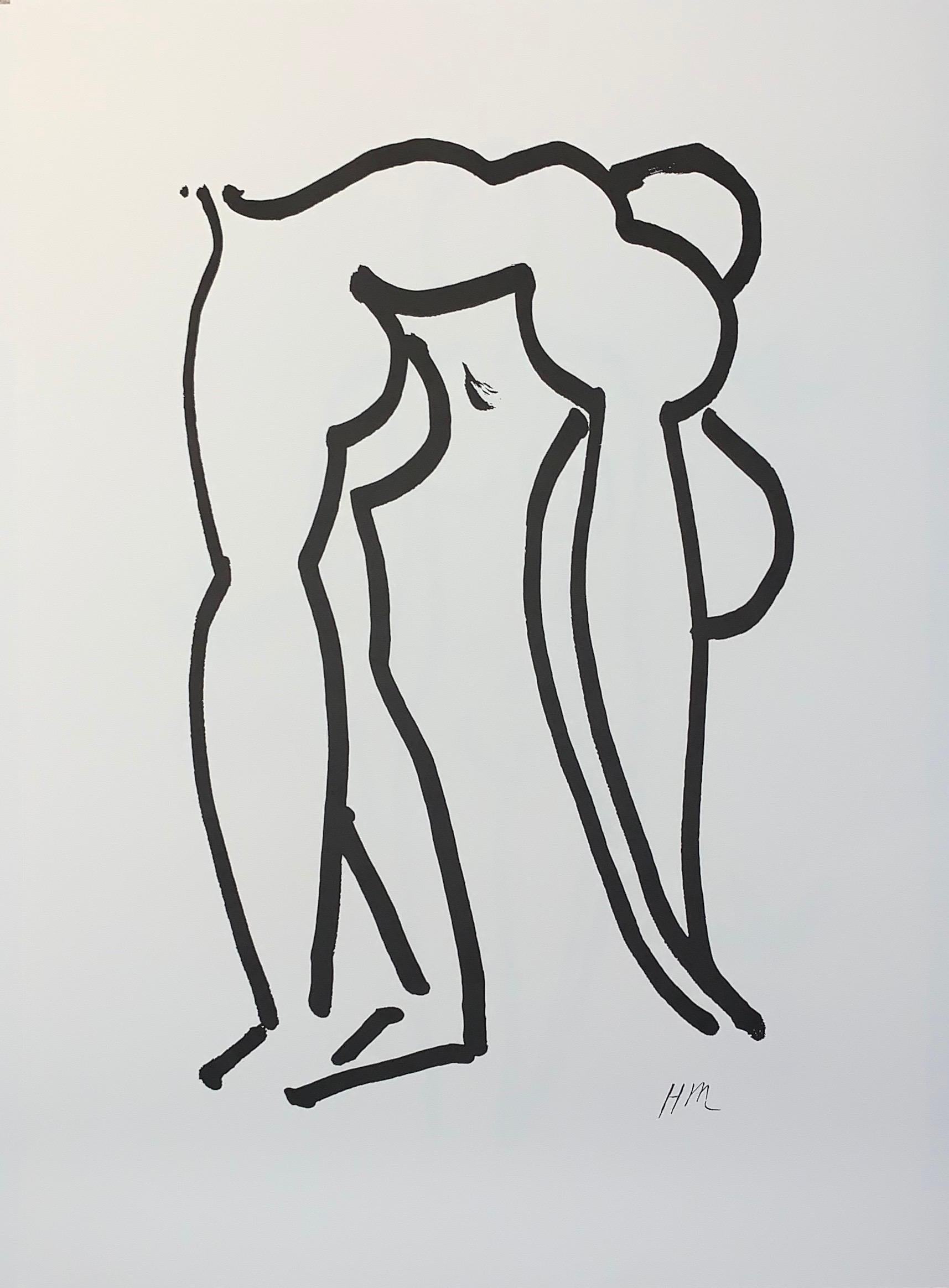Items Similar to Portrait of Woman - Original Etching by Edouard Chimot - Early 20th Century
Want more images or videos?
Request additional images or videos from the seller
1 of 6
Édouard ChimotPortrait of Woman - Original Etching by Edouard Chimot - Early 20th CenturyEarly 20th Century
Early 20th Century
About the Item
Two Figures is an Original etching monotype realized by Edouard Chimot.
The artwork is in good condition on the yellowed paper, included a cardboard passpartout (51x35 cm).
Hand-signed by the artist on the lower right corner.
Represents two nudes women with a white ball.
Édouard Chimot (26 November 1880 – 7 June 1959) was a French artist, illustrator and editor whose career reached its peak in the 1920s in Paris, through the publication of fine quality art-printed books. As artist his own work occupies a characteristic place, but as editor also his role was extremely important in bringing together some of the outstanding talents of that distinctive period in French art and providing the commissions upon which the development of their work in a formal context occurred.
- Creator:Édouard Chimot (1880 - 1959, French)
- Creation Year:Early 20th Century
- Dimensions:Height: 15.36 in (39 cm)Width: 11.42 in (29 cm)Depth: 0.04 in (1 mm)
- Medium:
- Movement & Style:
- Period:
- Framing:Framing Options Available
- Condition:Insurance may be requested by customers as additional service, contact us for more information.
- Gallery Location:Roma, IT
- Reference Number:Seller: T-1304761stDibs: LU65039913452
About the Seller
4.9
Platinum Seller
These expertly vetted sellers are 1stDibs' most experienced sellers and are rated highest by our customers.
1stDibs seller since 2017
6,767 sales on 1stDibs
Typical response time: 3 hours
- ShippingRetrieving quote...Ships From: Monaco, Monaco
- Return PolicyA return for this item may be initiated within 14 days of delivery.
Auctions on 1stDibs
Our timed auctions are an opportunity to bid on extraordinary design. We do not charge a Buyer's Premium and shipping is facilitated by 1stDibs and/or the seller. Plus, all auction purchases are covered by our comprehensive Buyer Protection. Learn More
More From This SellerView All
- Femme Affranchie A' Quatorze Heures Chante Midi - Georges RouaultBy Georges RouaultLocated in Roma, ITSigned on plate. Edition of 450 prints, belonging to the suite “Miserere”, considered as the most important religious graphic work of XX century. The single prints, realized with a s...Category
1940s Post-Impressionist Figurative Prints
MaterialsEtching
- Tavern - Etching by Marcel Gromaire - 1952By Marcel GromaireLocated in Roma, ITTavern is a black and white etching on paper, realized in 1952 by Marcel Gromaire (1892-1971). Monogrammed on plate on the lower left corner. Good conditions except for some foxing...Category
1950s Post-Impressionist Figurative Prints
MaterialsEtching
- Des Ongles Et Du BecBy Georges RouaultLocated in Roma, ITEdition of 450 prints, belonging to the suite “Miserere”, considered as the most important religious graphic work of XX century. The single prints, realized with a sophisticated mixe...Category
1940s Post-Impressionist Figurative Prints
MaterialsEtching
- Au Bois de Boulogne - Original Etching by H. Farge - Mid 20th CenturyLocated in Roma, ITImage dimensions: 16 x 11 cm. Au Bois de Boulogne is an original modern artwork realized in the first decades of the XX Century by the French artist Henri Farge...Category
Mid-20th Century Post-Impressionist Figurative Prints
MaterialsEtching
- L’Ane - Original Etching and Aquatint by G. Rouault - 1927By Georges RouaultLocated in Roma, ITL’Ane is an original lithograph, realized by Georges Rouault in 1927, hand signed, Ambroise Vollard's stamp, trial proof of the first state, printed in 10 copies. Included a frame. In very good conditions. The artwork demonstrates a man-donkey creature dressed in suit formally and with a glasses. Georges Henri Rouault (1871-1958) was a French painter, print-maker artist, his artworks are often associated with Fauvism and Expressionism. He is well-known for paintings dedicated to courts, clowns and prostitutes. He was inspired by spirituality and knowledge of medieval stained glass...Category
1920s Post-Impressionist Figurative Prints
MaterialsAquatint, Etching
- Working - Original Etching by A. Delasalle - Mid-20th CenturyBy Angèle DelasalleLocated in Roma, ITWorking is a contemporary artwork realized by the French artist Angèle Delasalle in the Mid-20th Century. Original etching and drypoint. Signed and ...Category
Mid-20th Century Post-Impressionist Figurative Prints
MaterialsEtching
You May Also Like
- SportsmenBy Louis LegrandLocated in Storrs, CTSportsmen. 1908. Etching and drypoint. Exsteens 271.i/ii. 11 1/4 x 5 3/4 (sheet 17 3/8 x 12 1/4). Series: Les Bars. From the first state edition of 30 proofs with the remarque sketch...Category
Early 1900s Post-Impressionist Figurative Prints
MaterialsDrypoint, Etching
- Erinnerung (Remembrance) — Turn-of-the Century Romantic EtchingBy Max KlingerLocated in Myrtle Beach, SCMax Klinger, 'Erinnerung (Remembrance)', etching and aquatint, 1896. A fine, richly inked impression, on off white, wove paper, with full margins (1 3/4 to 3 1/8 inches), in excellen...Category
1890s Post-Impressionist Figurative Prints
MaterialsAquatint, Etching
- Charlotte and Amalia by Lélia Pissarro - EtchingBy Lelia PissarroLocated in London, GBCharlotte and Amalia by Lélia Pissarro (b. 1963) Etching 22.7 x 27.5 cm (9 x 10 ⁷/₈ inches) Signed lower left, Lélia Pissarro Numbered lower right, 2/15 Artist biography: Born in P...Category
1990s Post-Impressionist Figurative Prints
MaterialsEtching
- Chatter by Orovida Pissarro - EtchingBy Orovida PissarroLocated in London, GBChatter by Orovida Pissarro (1893-1968) Etching 26 x 19 cm (10 ¹/₄ x 7 ¹/₂ inches) Signed and dated lower right Orovida 1927 Inscribed lower left Trial proof no. 18/25 and titled lower middle Artist biography: Orovida Camille Pissarro, Lucien and Esther Pissarro’s only child, was the first woman in the Pissarro family as well as the first of her generation to become an artist. Born in Epping, England in 1893, she lived and worked predominantly in London where she became a prominent member of several British arts clubs and societies. She first learned to paint in the Impressionist style of her father, but after a brief period of formal study with Walter Sickert in 1913 she renounced formal art schooling. Throughout her career, Orovida always remained outside of any mainstream British art movements. Much to Lucien's disappointment she soon turned away from naturalistic painting and developed her own unusual style combining elements of Japanese, Chinese, Persian and Indian art. Her rejection of Impressionism, which for the Pissarro family had become a way of life, together with the simultaneous decision to drop her famous last name and simply use Orovida as a ‘nom de peintre’, reflected a deep desire for independence and distance from the weight of the family legacy. Orovida's most distinctive and notable works were produced from the period of 1919 to 1939 using her own homemade egg tempera applied in thin, delicate washes to silk, linen or paper and sometimes embellished with brocade borders. These elegant and richly decorative works generally depict Eastern, Asian and African subjects, such as Mongolian horse...Category
1920s Post-Impressionist Figurative Prints
MaterialsEtching
- Man & Beast by Orovida Pissarro - EtchingBy Orovida PissarroLocated in London, GB*UK BUYERS WILL PAY AN ADDITIONAL 20% VAT ON TOP OF THE ABOVE PRICE Man & Beast by Orovida Pissarro (1893-1968) Etching 27 x 22 cm (10 ⁵/₈ x 8 ⁵/₈ inches) Signed and dated lower right, orovida 1924 Inscribed lower left, Final state no 12/40 and titled lower centre Artist biography: Orovida Camille Pissarro, Lucien and Esther Pissarro’s only child, was the first woman in the Pissarro family as well as the first of her generation to become an artist. Born in Epping, England in 1893, she lived and worked predominantly in London where she became a prominent member of several British arts clubs and societies. She first learned to paint in the Impressionist style of her father, but after a brief period of formal study with Walter Sickert in 1913 she renounced formal art schooling. Throughout her career, Orovida always remained outside of any mainstream British art movements. Much to Lucien's disappointment she soon turned away from naturalistic painting and developed her own unusual style combining elements of Japanese, Chinese, Persian and Indian art. Her rejection of Impressionism, which for the Pissarro family had become a way of life, together with the simultaneous decision to drop her famous last name and simply use Orovida as a ‘nom de peintre’, reflected a deep desire for independence and distance from the weight of the family legacy. Orovida's most distinctive and notable works were produced from the period of 1919 to 1939 using her own homemade egg tempera applied in thin, delicate washes to silk, linen or paper and sometimes embellished with brocade borders. These elegant and richly decorative works generally depict Eastern, Asian and African subjects, such as Mongolian horse...Category
1920s Post-Impressionist Animal Prints
MaterialsEtching
- La Marchande des Quatres-SaisonsBy Edgar ChahineLocated in Middletown, NYEtching with drypoint on cream wove paper, 11 3/4 x 13 3/4 inches (297 x 347 mm), full margins. Signed in pencil and numbered 32/40, lower margin. Minor mat tone and several small lo...Category
Early 20th Century Post-Impressionist Portrait Prints
MaterialsHandmade Paper, Rag Paper, Drypoint, Etching
Recently Viewed
View AllMore Ways To Browse
Edouard Chimot On Sale
St Georges Chapel
Stained Glass Divider
Star Burst Mid Century
Vintage Stall
Vintage World Map School
Vintage World School Map
Wall Art Water Nude
Prison Bar
Vintage Easter Paper
Vintage 90S Vans
Glass Hair Pin
French Cat Poster
Judith With Head
Parisian Apartment Style
Drum Major
German Railway Poster
Levi Poster Vintage





